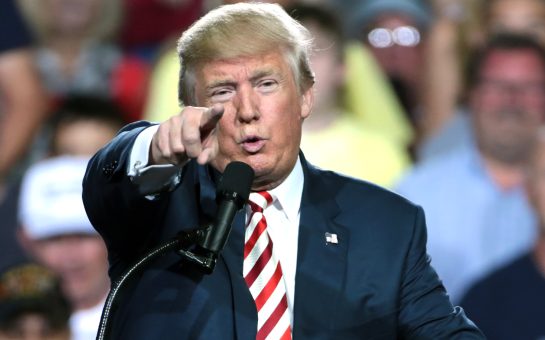Americans are set to head to the polls on Tuesday for this year’s presidential election between Democrat Kamala Harris and Republican Donald Trump. With issues such as abortion, the economy and the ongoing crisis in Gaza set to mobilise large numbers of voters, how do US presidential elections actually work?
Presidential elections 101
The presidential election in the United States occurs every four years on the first Tuesday in November. The winning candidate, referred to as the President-Elect, formally becomes the President in a swearing-in ceremony known as an ‘Inauguration’ on 20 January.
Article II of the US Constitution sets out the eligibility criteria for the US president: must be over 35 years old, a US-born citizen and have lived in the US as a resident for 14 years.
Presidents can serve a maximum of two terms or a total of eight years.
Everyone over the age of 18 is eligible to vote, providing they have registered and can present a valid ID if required by the state in question.
Some states offer early voting either by mail or in person.
The University of Florida’s Election Lab calculated that a week out from election day, more than 50 million people had voted early.
This election is the third consecutive election that Donald Trump has run in, having won in 2016 and lost in 2020. Trump confirmed last month that he does not expect to run again in 2028 if he loses this election.
The Constitution sets out three ways that a president may be removed from office: by resignation, through disability (or death), and through the process of impeachment for ‘treason, high crimes and misdemeanours’.
The Electoral College: what is it and how does it work?
Set out in Article II of Section 1 of the US Constitution and the 12th Amendment, the Electoral College is a group of people appointed by each state to formally elect the President and Vice President.
Since 1964, there have been 538 electors in each presidential election. Candidates must win at least 270 electoral college votes to win the election.
The number of electors each state has is determined by population size. When the census is taken every 10 years, a state may gain or lose a few electoral votes. States with higher populations such as California, Texas and Florida have significantly more electoral college votes than states such as Idaho, North Dakota and South Dakota.
The official calculation is that the number of electors per state equals the number of House of Representative seats plus two (the number of Senate seats).
It is possible for a candidate to lose the popular vote (the total votes cast for that candidate) but to win the presidency as they collected more electoral college votes. This happened in 2016 when Democrat Hillary Clinton won the popular vote with 2,868,519 votes more than Republican candidate Donald Trump but he won the presidency with 306 electoral college votes compared to Clinton’s 232.

What exactly is a ‘swing state’?
Since the 2000 election, states can be considered a safe ‘Blue State’ or a ‘Red State’ based on how they have consistently voted for the previous four consecutive election cycles. For example, amongst the states with high numbers of electoral college votes, California is a Blue State and Texas is a Red State.
Swing states, however, are states that could be won by either the Democratic or Republican candidates. In the 2024 election, these states are Arizona, Georgia, Michigan, Nevada, North Carolina, Pennsylvania and Wisconsin. Between these seven states, there are 93 electoral college votes which means that candidates tend to pay extra attention to these battleground states.
“We have a winner!” Now what?
As mentioned previously, states and the whole election can be called before every vote is counted but this could take a few days in such a close election.
In 2020, Trump and his team filed more than 60 lawsuits to challenge his election loss. If he loses again, it is likely he will take similar action. His team has already filed lawsuits raising unfounded claims of voter fraud.
States have a deadline of 11 December to resolve disputes about the election results. Shortly after this deadline, the electors of the Electoral College meet in their respective states to cast their votes for the president and vice president.
On 6 January, the full Congress will meet to formally confirm each vote and confirm the president and vice-president ahead of the inauguration on 20 January.
How does this differ from the UK?
In the UK, the prime minister is a symbolic but powerful position given to the leader of the party that won the most seats in a general election to form a government. In elections, the public cast a vote for their constituency’s MP and do not vote directly for the prime minister.
Party leaders are voted for by party members, which is anyone from MPs and councillors to members of the public that have paid for party membership, in a closed leadership campaign such as the recent Conservative leadership race. Looking at the successive leadership changes in the Conservative Party from 2016 onwards, the process of selection of a party leader, and thus prime minister if in power, has been criticised for being closed to the majority of the voting public.
Featured Image: element5digital (CC BY-NC-ND 2.0)




